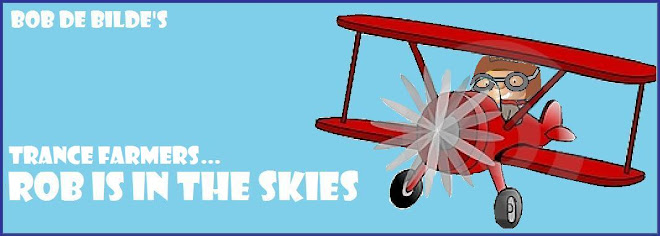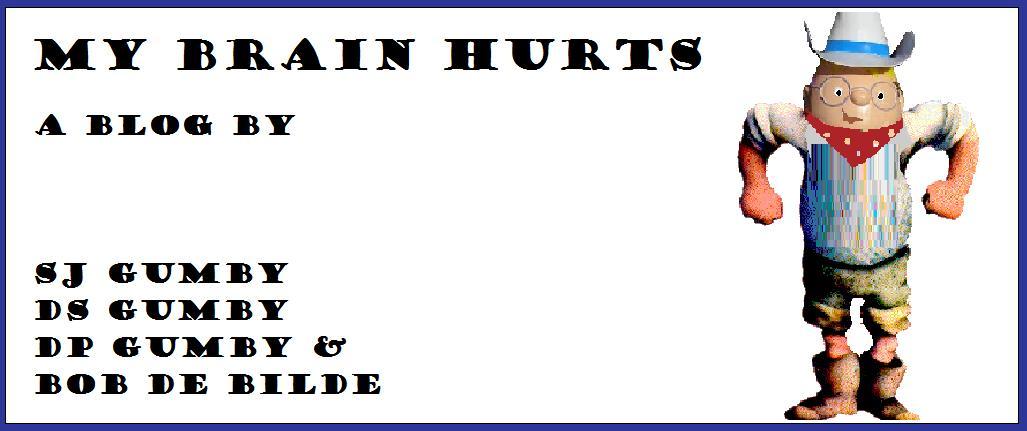I've just agreed to 'ghost write' the David Wilson blog for my old school mate, Dave 'Snooks' Wilson. The URL is http://thedavidwilson.
Birmingham: The second city
 Birmingham (pronounced /ˈbɝːmɪŋəm/ (
Birmingham (pronounced /ˈbɝːmɪŋəm/ (Birmingham was the powerhouse of the Industrial Revolution in England, a fact which led to it being known as "the workshop of the world" or the "city of a thousand trades". Although Birmingham's industrial importance has declined, it has developed into a national commercial centre, being named as the second-best place in the United Kingdom to locate a business, and the 14th best in Europe by Cushman & Wakefield in 2009. Birmingham is a national hub for conferences, retail and events along with an established high tech, research and development sector, supported by its three Universities. It is also the fourth-most visited city by foreign visitors in the UK.
In 2007, Birmingham was ranked as the 55th-most livable city in the world and the second most livable in the UK, according to the Mercer Index of worldwide standards of living. Birmingham was also one of the founding cities for the Eurocities group and is also sitting as chair. Birmingham has the second-largest city economy in the UK, and was ranked 72nd in the world in 2008.
People from Birmingham are known as 'Brummies', a term derived from the city's nickname of 'Brum'. This comes in turn from the city's dialect name, Brummagem, which may have been derived from one of the city's earlier names, 'Bromwicham'. There is a distinctive Brummie dialect and accent, both of which differ from the adjacent Black Country.
(The picture in this article was taken by me in 2001 and enhanced using the free tool at photofiltre to give the city a claret and blue air)
Saturday 30 January 2010
A new challenge...
Thursday 28 January 2010
The Silver Arse (US translation: The Silver Ass)
The Bull Ring is a major commercial area of Birmingham, England. It has been an important feature of Birmingham since the Middle Ages, when its market was first held. It has been developed into a shopping centre twice; first in the 1960s, and then in the 2000s.
The site is located on the edge of the sandstone city ridge which results in the steep gradient towards Digbeth. The slope drops approximately 15 metres (49.2 ft) from New Street to St Martin's Church.
Was it my multi-blogged moan?
Was it my multi-blogged moan that un-locked my new blog http://sequels-and-trilogies.
I know that blogger took the full 20 days to un-lock a blog of a friend of mine. Now his block WAS highly political but there should be no difference.
Perhaps it was my genuine threat to move to wordpress?
Who knows?
Thank You blogger for acting quickly
Bob de Bilde
Tuesday 26 January 2010
Bob de Bilde gets his 15 minutes of fame...
on IS A C*NT...
http://isacunt.blogspot.com/
Thanks to GOT & the crew
My Disgust at Blogger
Blogger has marked one of my blogs (Prequels, Sequels & Trilogies) as spam...
It will be deleted within 20 days if I do not lodge a review
WTF Blogger... I am seriously considering moving all my blogs to the more versatile Wordpress !
I am reposting this on ALL my other open blogs using the sidewikibar thingy!!!
Monday 25 January 2010
Koen Kessels picks up the baton at Birmingham Royal Ballet
 The New Year brings a new music director to Birmingham Royal Ballet: Koen Kessels, who once had thoughts of becoming an architect, as he explains during the course of this conversation.
The New Year brings a new music director to Birmingham Royal Ballet: Koen Kessels, who once had thoughts of becoming an architect, as he explains during the course of this conversation. The Belgian maestro takes over as BRB’s music director following the appointment of his predecessor, Barry Wordsworth, to the similar position at the Royal Ballet in the Royal Opera House, Covent Garden, where Kessels himself has worked.
Other venues where Koen has been engaged include the Theatre de la Monnaie, Flanders Opera, the Opera National de Paris, the National Opera Sofia, as well as work in Japan.
Saturday 23 January 2010
Proud to be a Brummie!
The news that Adrian Chiles is to host a new version of Nationwide and thereby become the first anchor with a Brummie voice to appear on prime-time BBC1 makes me glow with civic pride. It impels me to share my love for a city (even though I live in London) that has been criminally misunderstood and misrepresented for so long. So here are 22 things about Birmingham that you didn't know - or (probably) care about - plus a guide to speaking Brummie, proper loike.
1. What precisely does the Birmingham accent sound like? According to Harry Enfield, who is supposed to be a comedian, it often consists of putting the letter "O" front of the letter "I" and replacing each "U" with a "W", with hilarious consequences. For example: "Oi am considerably richer than yow." Very amusing Harry. Ha, ha, hah. But in fact Enfield is so wide of the mark it isn't even funny. See point 2 for an explanation.
2. So what is Brummie, then, if you're so clever? Good question. It is not an accent, nor a dialect, nor even a kind of vernacular. It is more of a syllable. Let's see if you can say it. Repeat after me: "Ar". No, that's not quite right. Try again, and this time try to sound more adenoidally depressed: "Ar." Better. You see "Ar" means everything in the second city: "Yes", "No", "Goodbye", "The antidisestablishment movement surely prefigures the looming schism in the Anglican church." It's like "Bof!" in French - you can use it everywhere and in any situation and everybody will think you're fluent. Nobody says anything else. Trust me.
3. Actually, that's not quite true. Brummies also say: "Tara-a-bit" which means "Au revoir, moite" - or "Au revoir, mate," as you non-Brummies would say.
4. Brummie offspring call their mothers "mom", not "mum", which makes it difficult for children to buy appropriate greeting cards in this orthographically challenged land. Unless you're a Brummie in America, in which case there's no problem, because in the US you literally can't move for "Happy birthday, Mom" cards.
5. Birmingham has more miles of canals than Venice and more trees than Paris. But, unfortunately for the canals and trees, they are in Birmingham and not Venice or Paris. This makes them all quite sad.
6. Tony Hancock, Birmingham's most famous depressed comedian, was born in Hall Green and later committed suicide. Would a 16-hour course of cognitive therapy at a government-run so-called "happiness centre" that "happiness gurus" are currently recommending have helped him? Not if the centre had been in Hall Green.
7. There are more Antony Gormley statues of metal men in Birmingham's public places than there are miles of canal or trees. You can't stop him! Don't think they haven't tried!
8. The smell from the HP Sauce factory in Aston drifts over the Aston Expressway. This stretch of motorway is, as a result, the only one in the world where you are obliged by law to keep car windows up and maintain a minimum speed of 50mph. These rules are to be relaxed now that sauce production is being relocated to Holland. Do the Dutch really know what they're getting in to? I don't think so.
9. The now-demolished inner ring road was a piece of public art, just like a Gormley statue. Nobody was meant to drive on it!
10. Prince William and David Cameron support Aston Villa, no matter how much people ask them to stop.
11. There was a resin sculpture in Centenary Square called Forward, depicting the city's men and women marching from its smoke-stack past into some delightful multicultural future - until some kids burned it down in 2003. Does that mean Birmingham isn't going forward, you ask? Nobody likes a smartarse, sunshine.
12. The Rotunda is the world's first rotating 20-storey restaurant, supplying Balti cuisine on all floors and offering views of Birmingham - and beyond! As you know, "balti" means "bucket" in Urdu and, each evening, when the restaurant closes, the lid comes off the Rotunda so the restaurant can be aired. The escaped fumes usually drift over Smethwick, where they form a fetid cloud. Hence the expression "Well, I'll go to Smethwick", which suggests that the speaker is so surprised that they would do something madly contrary to their own interests.
13. Actor Julie Walters is from Smethwick. Improbably, she's quite fragrant.
14. At the new Selfridges, you can eat sashimi and sushi. Now that's posh.
15. UB40's best-selling single did not have to be re-pressed for Birmingham record shops with the title Red Red Woine. That's just a loie. (Incidentally, there's a town near Birmingham spelled Lye but pronounced Loye. Whacked out!)
16. In a night of rioting on July 14 1791, a Birmingham mob burned down nonconformist intellectual Joseph Priestley's home in Sparkbrook and tried to lynch him. So think on.
17. Priestley was a member of the Lunar Society, a group of industrialists and scientists (also including Matthew Boulton, Erasmus Darwin and Josiah Wedgwood) who used to meet on nights when there was a full moon. They called themselves the lunaticks. Those guys! Mad or what!
18. Steel Pulse once did a great reggae album called Handsworth Revolution. But there's wasn't one. Not really.
19. The Streets (aka Mike Skinner) is from Birmingham, but moved to that London. And yet we're supposed to believe he's somehow keeping it real!
20. Chiles supports West Bromwich Albion, which isn't really in Birmingham. It's in the Black Country, which is very different. (Stop looking at me blankly.) So maybe he isn't a true Brummie at all. Lenny Henry (Dudley), Noddy Holder (Walsall), Meera Syal (Essington, near Wolverhampton) are not Brummies either. Benjamin Zephaniah is, though.
21. George Eliot cried like a girl at a concert at Birmingham Town Hall in 1848. After that incident, nobody really believed he was a man any more.
22. They used to make Wolseleys (be still, my aching heart!) in Washwood Heath. But now hardly any cars are made in Birmingham. We will now bow our heads in two minutes' silence to pay respect to Birmingham - first city of the industrial revolution and former home to 1,000 manufacturing trades, that shall (Oh yes!) rise again. Won't we, readers? "Ar!" Well said.
Friday 22 January 2010
Football: The Second City Derby
Small Heath Alliance (now known as Birmingham City) and Aston Villa. If you venture 200 yards over the north east City limits you will arrive at West Bromwich Albion, and national commentators try to class them as a Birmingham team. but they most definitely are not.
Well top flight teams... Aston Villa (Villa) have had a much more successful history than Birmingham City (Blues) have had.
Villa have dozens of top flight trophies won in their 136 year history. Blues have won only the one (two if you include the Zenith Data systems aka The Mickey Mouse trophy). Furthermore, their sole victory in the 1963 League Cup was actually over Villa.
This week Villa have reached their 8th League cup final, having previously won the trophy five times...
The league and cup meetings between Villa and Blues are known as second city derbies. Due to the bias of the London/Manchester based press, it is often belittled on a national level
The clubs first met on 27 September 1879, when Birmingham City were called Small Heath Alliance. The game, on a pitch at Small Heath's Muntz Street ground described by the Villa players as "only suitable for pot-holing", finished 1–0 – recorded as "one goal and a disputed goal to nil" – to the home side. Villa won the first competitive game between the clubs, in the Second Round of the FA Cup at Wellington Road in 1887, by four goals to nil, and their first league encounter, in the First Division in the 1894–95 season, 2–1.
The two teams have engaged in several hotly contested matches. In the 1925 league game at Villa Park, with the home side 3–0 ahead with eleven minutes to go, Birmingham scored three times in a dramatic final spell to draw the match. The following year, Aston Villa made headlines with the signing of Tom 'Pongo' Waring, and his first appearance was for the reserves against Birmingham City's reserves, which famously drew a crowd of 23,000. Waring scored three times in the match.
The most significant clash was the final of the 1963 League Cup, which was staged not long after Aston Villa had beaten Birmingham City 4–0 in the league. Birmingham won 3–1 on aggregate over the two-legged final to claim their only major domestic honour to date.
During the late 1970s to early 1980s both Villa and Birmingham met regularly in the First Division and both teams had some memorable successes in the fixture. In 1980-81 Villa did the double over Birmingham and went onto win the First Division title. Birmingham scored a memorable 3-0 victory at St. Andrews in the first meeting following Villa's European Cup triumph in 1982.Both teams promptly went into decline. Birmingham racked up a 3-0 win in a relegation battle at Villa Park in March 1986 but were relegated at the end of that season. Villa would be demoted the following campaign. The next time Villa met Blues in a league fixture at Villa Park again was in the Second Division and saw a 2–1 Birmingham victory. The reverse fixture at St Andrews was a 2-1 Villa victory with both goals coming from Garry Thompson. The two sides would only meet again in the 1980s in cup competitions. Villa won 7-0 on aggregrate when they clashed twice in the 1988-89 League Cup. The same season Villa also won a Simod Cup clash 6-0.
As of the end of the 2008–09 season, there have been 115 meetings in major competition between the two teams since the first FA Cup meeting in 1887, of which Aston Villa have won 49 and Birmingham 37. The most goals in one game were scored in a league game on 7 July 1895, in the First Division, as Small Heath lost to Aston Villa 7–3. The biggest winning margin was 5–0 to Aston Villa on 12 October 1988. The last Birmingham victory over Aston Villa was on 20 March 2005, when Birmingham won 2–0 at St Andrew's. Villa have won the last five encounters, most recently on 13 September 2009 at St Andrews, which Villa won 1-0 with a Gabby Agbonlahor headed goal. After the game, 14 fans, made up of supporters from both teams, were arrested for public disorder offences and running onto the pitch.
Records
Firsts
- First competitive meeting: Aston Villa 4–0 Small Heath Alliance (FA Cup), 5 November 1887.
- First league meeting: Aston Villa 2–1 Small Heath, 1 September 1894.
- First away victory for Aston Villa: Small Heath 1–4 Aston Villa, 26 October 1895.
- First away victory for Birmingham City: Aston Villa 1–3 Birmingham, 20 January 1906.
Results
- Highest scoring game: Aston Villa 7–3 Small Heath, 7 September 1895.
- Largest winning margin (Aston Villa): 5 goals - 5–0, 12 October 1988.
- Largest winning margin (Birmingham City): 4 goals - 4–0, 21 September 1968.
Players
- Most goals in a match (Aston Villa):
- Most goals in a match (Birmingham City):
Trends
- Most games won in a row (Aston Villa): 5, 12 December 1987 – 6 November 1993 and 16 October 2005 – 13 September 2009 (ongoing).
- Most games won in a row (Birmingham City): 5, 3 April 1976 – 25 February 1978.
- Most games without defeat (Aston Villa): 13, 5 November 1887 – 25 February 1905.
- Most games without defeat (Birmingham City): 6, 8 March 1933 – 23 November 1935 and 16 September 2002 – 20 March 2005.
- Most drawn games in a row: 4, 10 December 1949 – 21 September 1955.
- Ever since Birmingham have been in the Premier League the result has always been the same during that particular season e.g. 2002/2003- 2 Birmingham wins, 2003/2004- 2 draws, 2004/2005- 2 Birmingham wins, 2005/2006- 2 Villa Wins, 2007/2008- 2 Villa wins














































